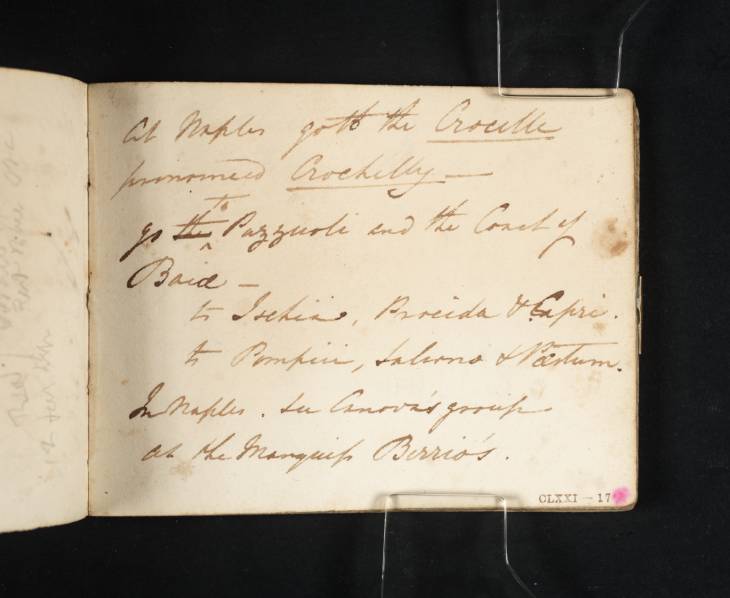References
How to cite
Nicola Moorby, ‘Notes by James Hakewill on Travelling in Italy 1819 by Joseph Mallord William Turner’, catalogue entry, March 2010, in David Blayney Brown (ed.), J.M.W. Turner: Sketchbooks, Drawings and Watercolours, Tate Research Publication, December 2012, https://www

